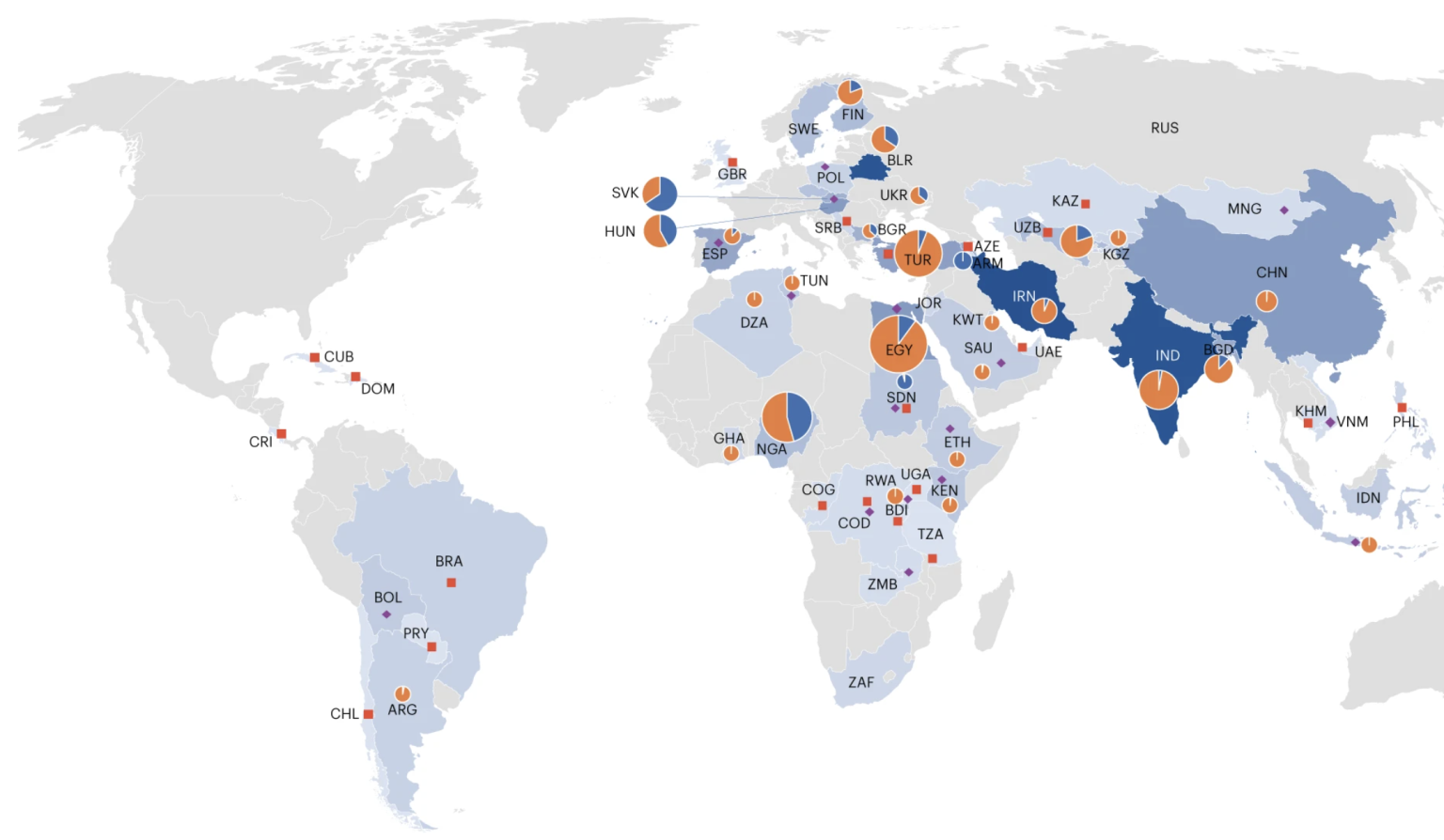Listen to the article
Key Takeaways
Playback Speed
Select a Voice
Nuclear Renaissance Gains Momentum Globally Amid Energy Security Concerns
Nuclear power is experiencing a global resurgence as governments worldwide seek solutions to mounting energy security concerns and ambitious climate goals. This revival marks a significant shift in energy policy, with both Western nations and BRIC countries making substantial commitments to nuclear expansion.
In the United States, bipartisan support for nuclear energy has translated into concrete legislative action. The re
Subscribe to Continue Reading
Get unlimited access to all premium content
Nuclear Renaissance Gains Momentum Globally Amid Energy Security Concerns
Nuclear power is experiencing a global resurgence as governments worldwide seek solutions to mounting energy security concerns and ambitious climate goals. This revival marks a significant shift in energy policy, with both Western nations and BRIC countries making substantial commitments to nuclear expansion.
In the United States, bipartisan support for nuclear energy has translated into concrete legislative action. The recent unanimous approval of H.R. 1042, the Prohibiting Russian Uranium Imports Act, represents a decisive move to reduce American dependence on Russian nuclear fuel. Effective until at least 2040, the legislation allows limited waivers only when alternative uranium sources are unavailable.
This development comes alongside the passage of the ADVANCE Act (Accelerating Deployment of Versatile, Advanced Nuclear for Clean Energy Act), which aims to streamline regulations and bolster U.S. leadership in nuclear technology. The Biden administration has backed these initiatives with billions in funding to revitalize domestic uranium production and processing capabilities.
“To reach our goal of net zero by 2050, we have to at least triple our current nuclear capacity in this country. That means we’ve got to add 200 more gigawatts by 2050,” said U.S. Energy Secretary Jennifer Granholm, underscoring the administration’s ambitious target.
Achieving this goal would dramatically increase uranium demand, potentially tripling current consumption from approximately 50 million pounds annually to 150 million pounds or more.
Across the Atlantic, European attitudes toward nuclear power are evolving unevenly. The United Kingdom has committed to building up to eight new reactors by 2030, aiming to generate a quarter of its electricity from nuclear by mid-century. France, already deriving over 70% of its electricity from nuclear sources, plans to construct six new reactors while extending the operational lifespan of existing facilities.
“Nuclear power is essential for achieving our climate goals and ensuring a secure, independent energy supply,” French President Emmanuel Macron stated, reinforcing his country’s commitment to nuclear energy.
In contrast, Germany’s controversial nuclear phase-out has faced growing criticism. The country shut down its last nuclear plants in 2022-2023, resulting in increased reliance on coal and natural gas, higher electricity prices, and rising greenhouse gas emissions. This outcome has sparked renewed debate about the wisdom of abandoning nuclear power amid climate and energy security challenges.
Australia presents another interesting case. Despite possessing vast uranium resources, the country maintains a long-standing ban on nuclear power. However, this position is increasingly contested, with the opposition Liberal Party announcing plans to build Australia’s first nuclear plants as early as 2035.
“Nuclear power should be on the table for consideration as part of our future energy mix,” argued House Standing Committee on the Environment and Energy Chairman Ted O’Brien. “We owe it to Australians to look at this technology with an open mind.”
While Western nations debate nuclear’s role, BRIC countries are forging ahead with ambitious expansion plans. China leads this charge with over 50 reactors under construction or planned, positioning itself to account for approximately 70% of global nuclear power growth. This surge in Chinese demand creates substantial opportunities for uranium producers, particularly those in Africa that can serve both Eastern and Western markets.
India aims to generate 25% of its electricity from nuclear by 2050, while Russia maintains a significant presence in nuclear power generation and technology exports despite international sanctions. Brazil, though operating a smaller nuclear program, has expressed interest in expanding its capacity in coming decades.
Recognizing the need for coordinated action, five major nuclear nations—the United States, Canada, France, Japan, and the United Kingdom—formed the “Sapporo 5” alliance in 2023. This partnership aims to mobilize $4.2 billion to increase enriched uranium production capacity free from Russian influence. The initiative has already prompted commitments from major nuclear fuel manufacturers like Urenco, which plans to increase capacity at its New Mexico facility by 15% by 2025.
For investors, the nuclear renaissance presents compelling opportunities. Rising global demand for uranium, efforts to diversify supply chains away from Russian dominance, and the long-term nature of nuclear projects all contribute to a strengthening investment thesis for uranium producers and nuclear technology companies.
“The stars are aligning for a sustained bull market in uranium,” observed John Ciampaglia, CEO of Sprott Asset Management. “The fundamentals are stronger than ever, and we’re seeing more and more investors waking up to the opportunity.”
Companies positioned to benefit include established producers like Energy Fuels and Ur-Energy in the United States, development-stage companies like Bannerman Energy in Namibia, and exploration-focused firms like ATHA Energy in Canada. These companies offer varying exposure to different segments of the nuclear fuel cycle and geographical regions.
However, challenges remain. Nuclear projects still face high upfront costs, complex regulatory requirements, public perception concerns, and competition from increasingly affordable renewable energy technologies. The industry’s ability to address these issues while capitalizing on growing government support will determine the extent of nuclear power’s resurgence in the global energy landscape.
As countries continue to grapple with the dual imperatives of decarbonization and energy security, nuclear power’s role appears increasingly vital. With substantial government backing and growing market demand, the sector seems poised for sustained growth in the coming decades.


